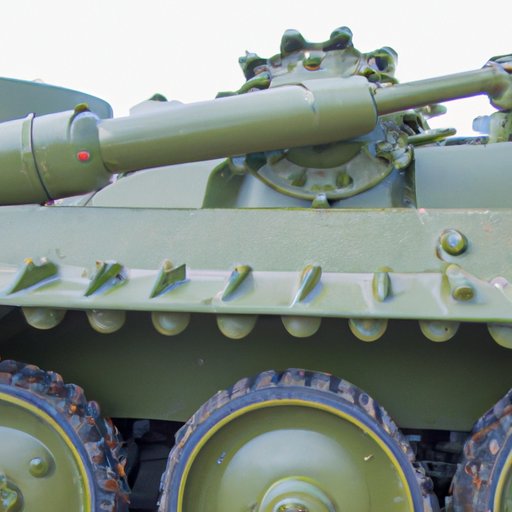Introduction
World War One was a conflict like no other in history. For the first time, new technologies were used on an unprecedented scale, with devastating results. During the war, advancements in weapons and technology had a major impact on the way it was fought. From the introduction of machine guns and airplanes to the use of submarines and tanks, these new technologies revolutionized the battlefields of World War One.

The Impact of New Technology on Trench Warfare
Trench warfare was one of the defining features of World War One. Soldiers spent months in trenches, dug into the ground for protection from enemy fire. With the introduction of new technology, however, the nature of trench warfare changed drastically.
One of the most important new technologies to emerge during WWI was the machine gun. This rapid-fire weapon had a devastating effect on the battlefield, allowing a single soldier to lay down a continuous stream of fire. In the trenches, this made it nearly impossible for infantry to launch successful attacks. As British General Sir Henry Rawlinson noted, “It is obvious that with modern weapons an attack by infantry unsupported by artillery will be attended with very heavy losses.”
The introduction of machine guns also changed the way trenches were used. Instead of attacking across open ground, soldiers sought shelter in deep dugouts or sheltered positions. This allowed them to avoid the deadly hail of bullets from machine guns and survive the battle.
How Airplanes Changed the Course of World War One
Airplanes played a crucial role in World War One. Before the war, aircraft were largely seen as a novelty, but during the conflict they revolutionized aerial combat. Planes provided a new level of reconnaissance, allowing commanders to assess enemy positions and plan strategies. They also allowed for more precise targeting, allowing pilots to drop bombs on specific targets with greater accuracy.
Airplanes had a major impact on some of the biggest battles of WWI. At the Battle of Verdun, for example, French planes were able to spot German troop movements and direct artillery fire onto them. This allowed the French to repel the German assault and win the battle.

How Submarines Played a Key Role in WWI
Submarines were another key new technology in WWI. These vessels had been around since the 19th century, but during the war they were used to great effect. Submarines were particularly effective at disrupting supply lines, as they could target enemy ships without being detected. This allowed them to severely disrupt Allied shipping and cause major damage to their war effort.
The German Navy was particularly successful in using submarines. They sunk hundreds of Allied ships and caused major disruption to the Allied supply chain. This forced the Allies to come up with new ways of protecting their ships, such as convoys and anti-submarine nets.
The Role of Artillery in WWI
Artillery was another key component of WWI. This powerful weapon allowed for the bombardment of enemy positions from long distances, allowing infantry to break through enemy defenses and launch successful attacks. At the Battle of the Somme, for example, British artillery bombarded German lines for several weeks before troops attacked. This allowed the British to break through the German lines and gain control of the battlefield.
Artillery was also used to devastating effect in other battles. At the Battle of Passchendaele, for example, Canadian artillery pounded German positions for days before the infantry launched their attack. This allowed the Canadians to break through the German lines and take the town.

How Tanks Revolutionized Battlefield Tactics
Tanks were first introduced in WWI and proved to be a game-changer. These armored vehicles allowed infantry to advance quickly and with greater protection. Tanks also allowed for breakthroughs in enemy lines, as their armor allowed them to withstand heavy fire from artillery and machine guns.
Tanks had a major impact on some of the biggest battles of WWI. At the Battle of Cambrai, for example, British tanks broke through the German lines and allowed the infantry to advance quickly and with greater protection. This allowed the British to take control of the town and turn the tide of the battle.
Conclusion
New technologies had a major impact on the course of WWI. The introduction of machine guns, airplanes, submarines, artillery, and tanks changed the way the war was fought and had a major impact on the outcome. These technologies revolutionized trench warfare, aerial combat, naval warfare, and battlefield tactics, and ultimately helped to bring the war to an end.
(Note: Is this article not meeting your expectations? Do you have knowledge or insights to share? Unlock new opportunities and expand your reach by joining our authors team. Click Registration to join us and share your expertise with our readers.)
